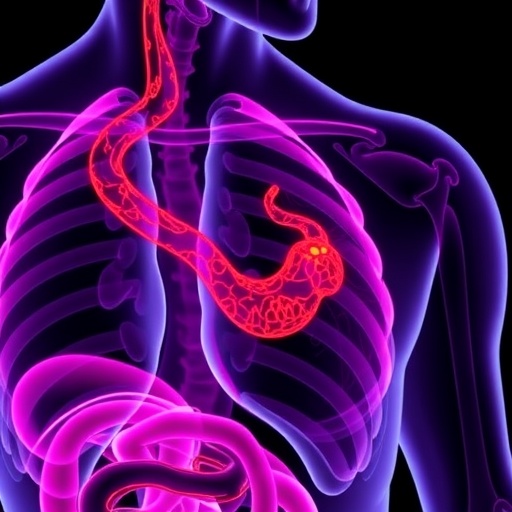Scientists at the Centro Nacional de Investigaciones Cardiovasculares (CNIC) have unveiled a groundbreaking advance in cardiovascular imaging that promises to reshape the clinical management of atherosclerosis, a chronic disease responsible for the majority of heart attacks and strokes worldwide. Their work demonstrates that ^18F-fluorodeoxyglucose positron emission tomography (^18FDG-PET)—a widely accessible imaging technology traditionally leveraged for oncology and other inflammatory diseases—can effectively quantify metabolic activity within arterial plaques, conveying critical insights into disease activity beyond mere inflammation.
Atherosclerosis is a progressive, insidious condition marked by the accumulation of lipids, immune cells, and fibrous elements within the arterial wall, forming plaques that gradually narrow and weaken blood vessels. These plaques may remain asymptomatic for years until destabilization or rupture precipitates acute cardiovascular events, including myocardial infarction and cerebrovascular stroke. Despite the availability of therapeutics aimed at halting or reversing lesion progression, clinicians face significant hurdles in noninvasively assessing treatment efficacy and residual risk on a patient-by-patient basis.
The exploration of metabolic imaging through ^18FDG-PET provides a novel lens into plaque biology. This technique utilizes a radiolabeled glucose analog that accumulates in cells exhibiting increased glycolytic activity, thereby serving as a surrogate marker for metabolic status. Historically, ^18FDG uptake in atherosclerotic lesions was predominantly interpreted as a proxy for inflammatory cell infiltration, particularly macrophage-driven processes. However, the CNIC researchers have now elucidated a more nuanced paradigm, revealing that the PET signal reflects integrated metabolic activity encompassing multiple cell populations within plaques, including macrophages, lymphocytes, and smooth muscle cells.
To rigorously investigate this relationship, the research team employed a genetically engineered animal model predisposed to advanced atherosclerosis, facilitating detailed interrogation of vascular lesions in a controlled experimental setting. Through a combination of dietary modifications and pharmacological interventions that mirror current clinical practices, they induced partial regression of established plaques. Sequential ^18FDG-PET imaging revealed a correlated decline in glucose metabolic activity paralleled by decreased expression of glycolytic enzymes across diverse plaque cell types, thereby validating the imaging modality’s sensitivity for monitoring disease modulation.
These findings challenge conventional wisdom that inflammation alone drives ^18FDG uptake in arterial plaques and underscore the multifaceted metabolic reprogramming occurring during atherosclerosis progression and regression. The ability to quantify cellular metabolism noninvasively provides clinicians and researchers with a powerful biomarker to evaluate therapeutic responses dynamically, offering a more precise means of stratifying cardiovascular risk and tailoring interventions.
Paula Nogales, lead author of the study and researcher at CNIC, emphasizes the clinical implications of this discovery: “Our data indicate that ^18FDG-PET captures the metabolic vigor of cells within atherosclerotic lesions. This expands its utility beyond inflammation imaging to become a sensitive tool for tracking disease activity and gauging treatment success.” Co-lead author Jacob Bentzon, from Aarhus University and head of CNIC’s Experimental Pathology of Atherosclerosis group, echoes this enthusiasm, highlighting the translational potential of adopting ^18FDG-PET in routine cardiovascular care.
While endothelial dysfunction and immune cell infiltration have long been recognized hallmarks of atherosclerosis, the metabolic phenotype of smooth muscle cells and lymphocytes within plaques is emerging as a pivotal determinant of lesion stability and progression. The CNIC study sheds light on this complexity, demonstrating that metabolic signatures within different cellular compartments contribute cumulatively to the imaging signal captured by ^18FDG-PET. This integrated perspective offers an enhanced understanding of atherosclerotic pathophysiology and opens avenues to identify novel metabolic targets for therapeutic intervention.
Moreover, the widespread availability of ^18FDG-PET scanners in hospitals globally positions this imaging approach as a feasible and scalable strategy for improving cardiovascular risk assessment. Incorporating metabolic imaging into clinical workflows could enable timely adjustments in treatment regimens, optimize resource allocation, and ultimately reduce the morbidity and mortality associated with atherosclerosis-related events.
Funding support for this pioneering work was provided by prestigious institutions, including the European Research Council via the Horizon 2020 research and innovation program, the Spanish Ministry of Economy, Industry, and Competitiveness with co-funding from the European Regional Development Fund, and the “la Caixa” Foundation through its AtheroConvergence initiative. These collaborative efforts underscore the high priority placed on advancing cardiovascular research and translating discoveries into meaningful patient outcomes.
The CNIC, an affiliate of the Carlos III Health Institute and recognized as a Severo Ochoa center of excellence, has established itself as a leading hub for cardiovascular research under the guidance of Director Dr. Valentín Fuster. Leveraging a unique public-private partnership model, the center integrates cutting-edge science with clinical translation efforts aimed at combating heart disease, the leading cause of death worldwide.
In conclusion, this seminal study redefines the diagnostic and prognostic potential of ^18FDG-PET in atherosclerosis by linking imaging signals to the comprehensive metabolic landscape of plaque cells. As a noninvasive biomarker capturing disease activity with high sensitivity, ^18FDG-PET stands to revolutionize patient monitoring and accelerate the development of novel therapies targeting the metabolic vulnerabilities of arterial lesions. With continued research and clinical validation, this technology could become an indispensable asset in the global fight against cardiovascular disease.
Subject of Research: People
Article Title: Atherosclerotic Disease Activity is Associated with Glycolytic Enzyme Expression Across Multiple Cell Types and is Trackable by FDG-PET
News Publication Date: 13-Aug-2025
Image Credits: CNIC
Keywords: Clinical medicine, Human health, Pharmacology, Medical specialties, Diseases and disorders, Health care




